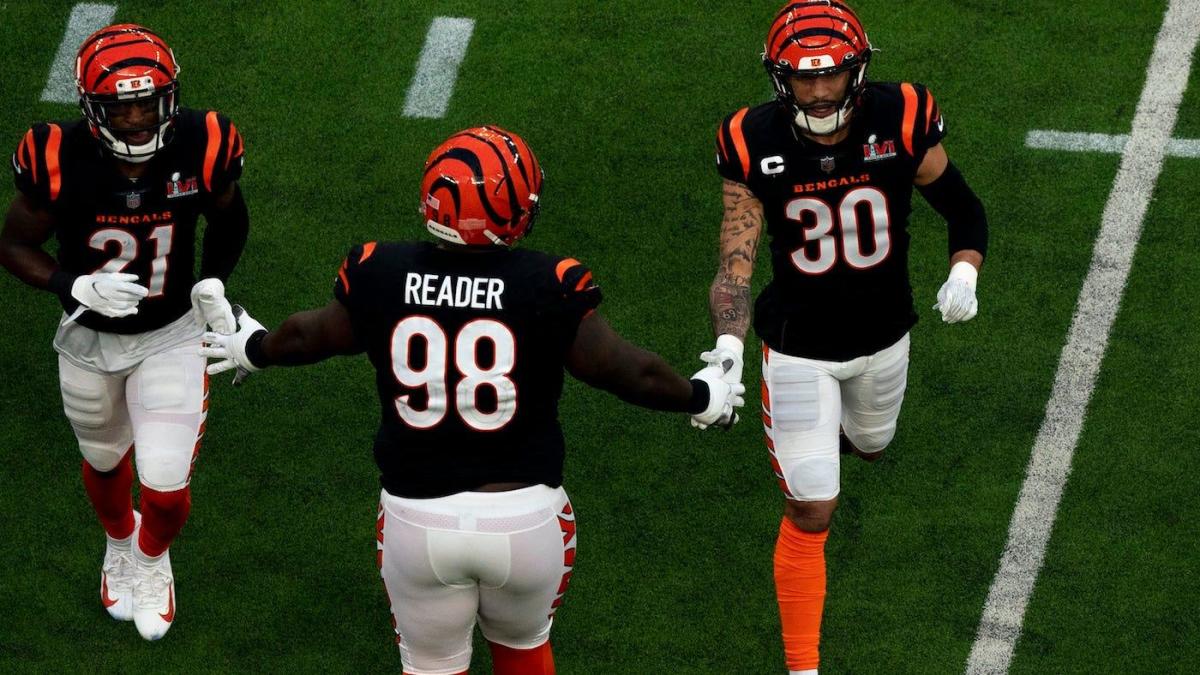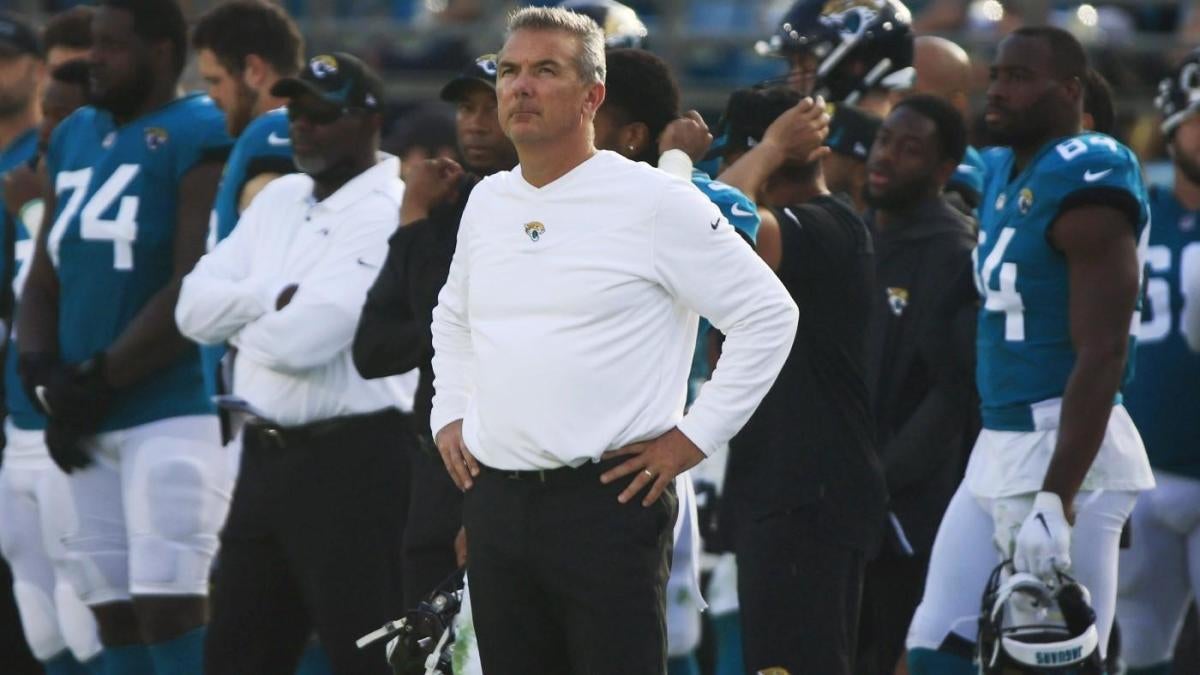Kentucky Derby’s a winner for NBC; ABC sets U.S. F1 record; Warriors still a huge draw: Sports on TV
Written by ABC Audio ALL RIGHTS RESERVED on May 10, 2022
The Kentucky Derby got some of its old TV mojo back now that it’s returned to its traditional first-Saturday-in-May time slot with a packed Churchill Downs.
That an 80-1 longshot erupted in the final moments – a little-known jockey brilliantly navigating an unheralded 11th-hour replacement horse through a sea of thundering equine muscle thanks to a gear no one knew Rich Strike possessed – didn’t hurt. It was a sports moment for the ages.
This year’s race averaged 16 million linear TV and streaming viewers on NBC, the network said, with viewership peaking at 19 million between 7-7:15 p.m. ET – the window for Rich Strike’s improbable victory. That topped the peak of 18.5 million for 2019’s Derby, when Maximum Security was disqualified minutes after the race because of interference with other horses.
Saturday’s television-only audience average was 15.8 million, which puts this year’s Derby in line with pre-pandemic averages. NBC’s pre-race coverage began at 2 p.m., and viewership increased as the race neared – reaching 3.27 million at 3 p.m., growing to 4.16 million at 4 p.m. and then 5.06 million a half-hour later.
2022 Kentucky Derby top local markets
| Market | Rating/share |
|---|---|
Louisville | 28.5/63 |
Ft. Myers | 18.7/41 |
Cincinnati | 16.2/45 |
West Palm Beach | 14.3/36 |
Buffalo | 11.5/29 |
Baltimore | 11.5/33 |
Knoxville | 11.2/26 |
Pittsburgh | 10.9/28 |
Providence | 10.7/27 |
Hartford | 10.7/28 |
(Note: Metrics for race portion only. A rating measures how many households in a local market or nationally watched a show. A share is how many TVs in use at a particular time were tuned to that program. Both are expressed as percentages. So for all TV households in Louisville, nearly 29 percent were tuned into the Derby, while 63 percent of TVs in use at the time of the race were watching.)
In 2020, the race was booted to Labor Day weekend with no attendance because of COVID-19, and viewership dropped to a record-low 9.3 million. Last year, it was held in May, albeit was limited crowds, and averaged 14.5 million viewers. Casual viewers are an important part of tentpole live sports events on TV, and when they’re out of schedule, networks lose millions of eyeballs.
From 2011-19, the Derby averaged 15.6 million TV viewers. That doesn’t account for out-of-home viewing that wasn’t formally measured by Nielsen until 2020, so the true average is likely a bit higher. Legalized sports gambling, which has been growing state by state in recent years, likely adds some viewership.
Much of the Kentucky Derby’s audience isn’t reflected by what happens during the event’s two minutes of actual racing. It’s driven by a blend of tradition and storyline buildup (and all the Charles Bukowski types with their betting apps). Coming into Sunday’s 148th running, the story really wasn’t the horses but the drama of recent years, including rare Triple Crown winners in 2015 and 2018 but also scandal and disqualifications.
Will Rich Strike’s victory spark at uptick at the Preakness, the next leg of the Triple Crown, at the end of the month? We shall see. If he wins, the Belmont Stakes in June will almost certainly enjoy a viewership boost and perhaps an attendance spike.
Saturday’s official in-person attendance per Churchill Downs’ press offices was 147,294. Attendance peaked at just over 170,000 in 2015 and steadily declined to 150,000 in 2019, per the Louisville Courier-Journal.
Gamblers wagered a race-record $168.8 million on the Derby, per the Daily Racing Form, and that’s up 9.9 percent over last year’s limited-attendance race and almost 6 percent over the record set in 2019.
The Kentucky Oaks, the famous race for three-year-old thoroughbred fillies run on Friday, averaged 244,000 viewers at 1 p.m. on NBC-owned USA Network. In 2019, when it aired on now-defunct NBCSN, it averaged 286,000 viewers and in 2018 it averaged 363,000.
NBC airs the Kentucky Derby under a 10-year media rights deal that goes through the 2025 races. The previous deal was reportedly worth an average of about $9 million annually, but it’s unclear how much NBC pays Churchill Downs under the current contract.
The network first began airing the race in 2001, after winning it from ABC.
AUTO RACING: Formula 1’s inaugural Miami Grand Prix was a massive TV hit. The ABC telecast on Sunday afternoon averaged 2.6 million total viewers, which is the open-wheel auto racing circuit’s best-ever live U.S. audience, per ESPN (which handles ABC Sports for shared owner Disney). Only a tape-delayed broadcast of the 2002 Monaco Grand Prix on ABC, which averaged 2.78 million, had a larger domestic F1 audience, per Sports Media Watch. Sunday’s race peaked with 2.9 million viewers from 4:45-5 p.m. ET for Max Verstappen’s victory.
Joey Logano’s victory on Sunday in NASCAR’s Goodyear 400 at Darlington averaged 2.61 million viewers on FS1, down from 3 million last year at the same time, date and network.
NBA: Golden State remains the NBA and TV networks’ golden child. Last week’s biggest playoff audiences were both Warriors-Grizzlies conference semi-final games. Golden State’s 142-112 rout of Memphis averaged 6.09 million (8:30 p.m. ET on Saturday, ABC) and 5.32 million for the Warriors’ 106-101 win on May 4 (9:41 p.m., TNT).
The series began with 7.71 million watching the Warriors win the opener on May 1, which was the biggest semi-final opener since 9.17 million watched Celtics-Heat in 2011, per Sports Media Watch.
Golden State is now up 3-1 in the series and can wrap it up Wednesday in Memphis. Tipoff is 9:30 p.m. ET on TNT.
Six other playoff games averaged at least 4 million viewers last week.
WNBA: The lone game for which viewership metrics are available is Saturday evening’s season tipoff at 6 p.m. ET between the Connecticut Sun and New York Liberty. It averaged 337,000 on ESPN. Last season, the W averaged 306,000 viewers on ESPN, which was up 49 percent over pandemic-roiled 2020 and 24 percent over pre-pandemic 2019.
NHL: Four playoff games topped 1 million viewers last week, and three of them were Pittsburgh-New York. The week’s hockey slate was led by 1.32 million for Rangers-Penguins Game 3 in a 7:14 p.m. ET Saturday puck-drop telecast on TNT. That was followed by 1.03 million for Game 1 of that series – three overtimes! – at 7 p.m. May 3 on ESPN. Thursday’s Game 2 averaged 1 million at 7 p.m. on TNT. Sunday’s Hurricanes-Bruins Game 4 at 12:30 p.m. averaged 1.01 million on ESPN.
MLB: NBC’s new Sunday morning baseball streaming package (“MLB Sunday Leadoff”) debuted with 1.34 million linear TV viewers for White Sox-Red Sox at 11:38 a.m. Those are the game’s simulcast viewers across NBC and the Peacock steaming service – what the network calls Total Audience Delivery.
The package, announced in March, is a Peacock paid-tier streaming property that will be exclusive to the NBC service the rest of the season, and the network isn’t disclosing the Peacock-only metrics. ShowBuzz Daily, which publishes Nielsen data, had the broadcast without Peacock at 1.29 million, which suggests 50,000 watched via streaming. That includes both Peacock and the NBC Sports app.
The 1.29 million Sunday viewers were the second-best MLB audience last week in ShowBuzz’s sports metrics, trailing only Dodgers-Cubs, which averaged 1.78 million on ESPN’s Sunday Night Baseball broadcast.
The remaining 17 games, starting with Padres-Braves on May 15, begin at 11:30 a.m. or noon.
USFL: The Fox-owned made-for-TV spring league’s Week 4 enjoyed 1.15 million viewers for Sunday’s Houston-New Orleans broadcast (3 p.m. ET, NBC/Peacock) and 1.05 million for Tampa Bay-Birmingham in primetime on Saturday (7 p.m., Fox).
For what amounts to a third-tier sports property ultimately intended to fill springtime scheduling holes, those are solid network TV numbers. The USFL can survive on such numbers, although the networks haven’t disclosed any financial success metrics that will determine the league’s long-term fate.
Other USFL TV numbers from this weekend were not good: Michigan-Philadelphia, a 10:20 p.m. kickoff on Friday that aired on FS1, averaged just 207,000 viewers – pretty gnarly even for that timeslot. Saturday’s New Jersey-Pittsburgh game streamed exclusively on Peacock and NBC has said it will not make public the USFL’s streaming-only figures.
COMING UP: Major TV sports events include the Preakness Stakes (4-7:30 p.m. ET on May 21, NBC), the PGA Championship (CBS final round coverage 1-7 p.m., May 22), and the Indy 500 (11 a.m.-4 p.m., May 29, NBC). Plus: The NBA and NHL playoffs continue, the WNBA’s regular season ramps up and the USFL’s inaugural season marches on.
All viewership data is from Nielsen and Adobe Analytics, and other metrics via the TV networks, Nielsen, Sports Media Watch, ShowBuzz Daily and the leagues. All times Eastern unless otherwise noted.
(Photo: Brian Spurlock / Icon Sportswire via Getty Images)






